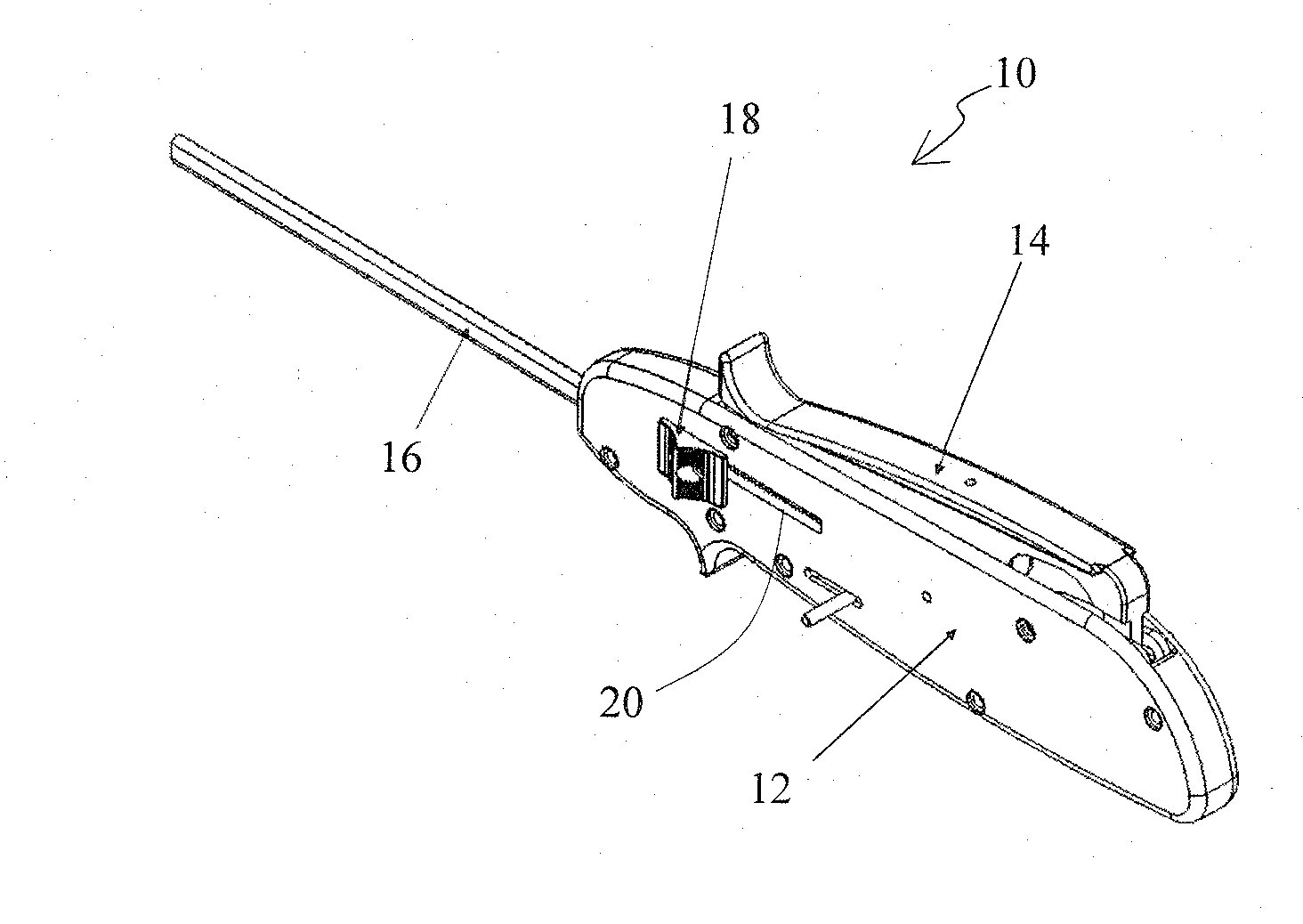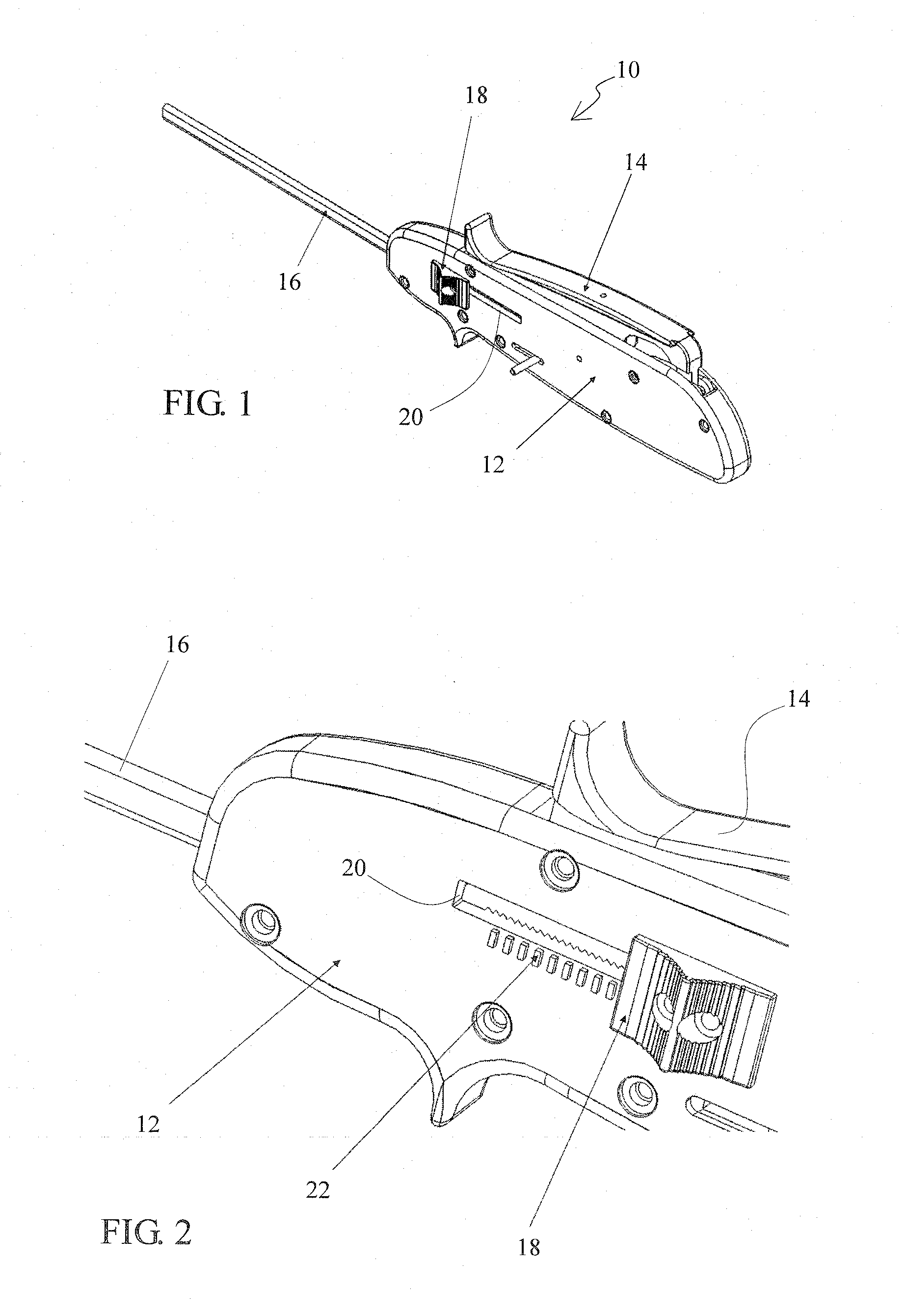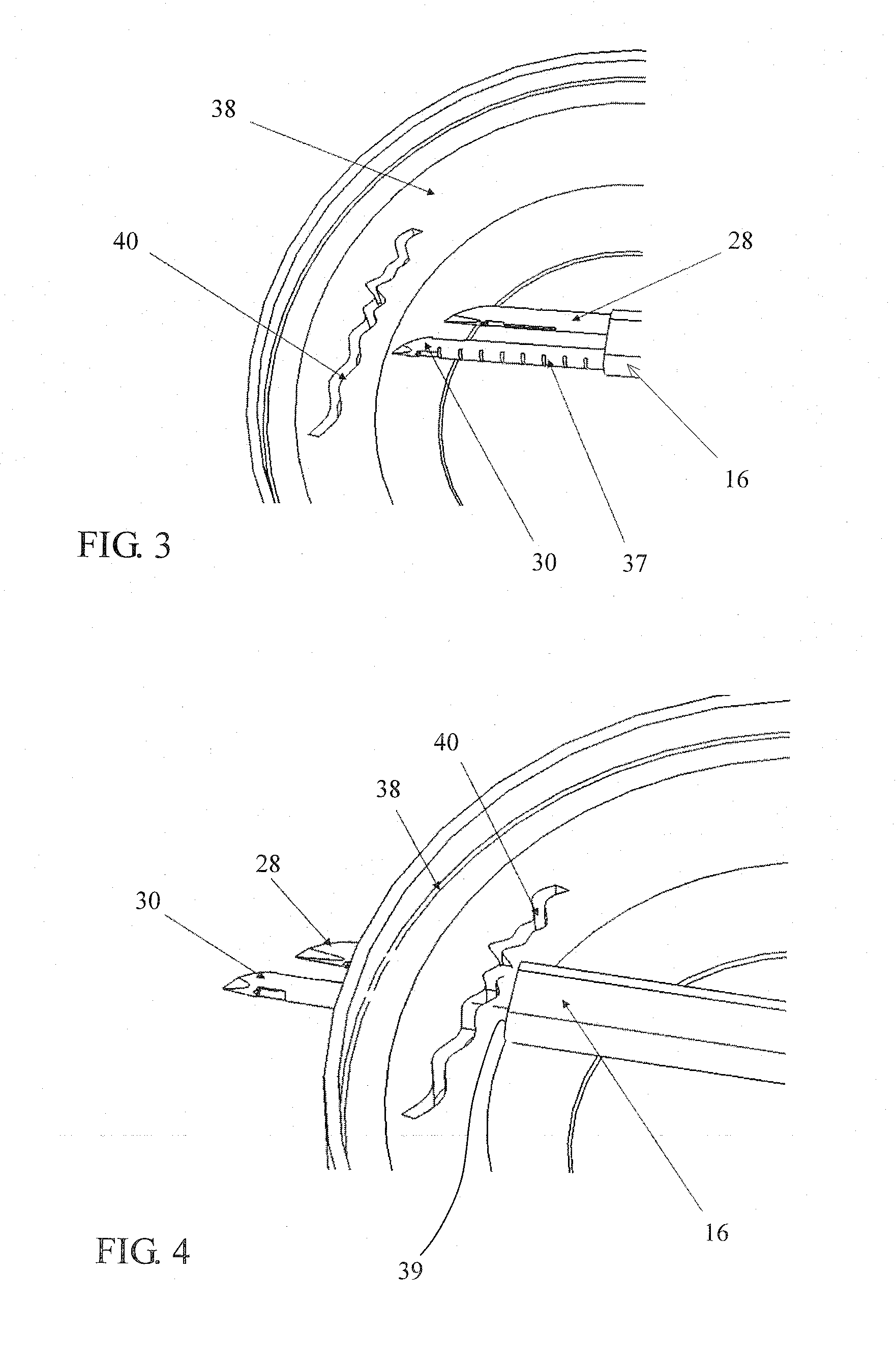Meniscal repair systems and methods
- Summary
- Abstract
- Description
- Claims
- Application Information
AI Technical Summary
Benefits of technology
Problems solved by technology
Method used
Image
Examples
Embodiment Construction
[0038]Referring now more particularly to the drawings, there is shown in FIG. 1 an embodiment of a meniscal repair device 10 constructed in accordance with the principles of the present invention. The device 10 comprises a handle 12 which has a suture needle advancement lever 14. Distally of the handle 12 is provided a depth limiter / insertion sheath 16. A depth limiter / insertion sheath actuation button 18 is disposed on the handle 12.
[0039]Now with reference to FIGS. 2 and 7, in addition to FIG. 1, additional constructional details of the handle 12 are illustrated. As shown particularly in FIG. 2, the depth limiter / insertion sheath actuation button 18 travels axially within a slot 20. A depth gauge 22 is provided for purposes which will be described below. In FIG. 7, wherein the cover of the handle has been removed to reveal the internal construction of the handle 12, it can be seen that a piston retention lever 24 and a catch spring piston 26 are disposed therein.
[0040]In FIGS. 6 a...
PUM
 Login to View More
Login to View More Abstract
Description
Claims
Application Information
 Login to View More
Login to View More - R&D
- Intellectual Property
- Life Sciences
- Materials
- Tech Scout
- Unparalleled Data Quality
- Higher Quality Content
- 60% Fewer Hallucinations
Browse by: Latest US Patents, China's latest patents, Technical Efficacy Thesaurus, Application Domain, Technology Topic, Popular Technical Reports.
© 2025 PatSnap. All rights reserved.Legal|Privacy policy|Modern Slavery Act Transparency Statement|Sitemap|About US| Contact US: help@patsnap.com



